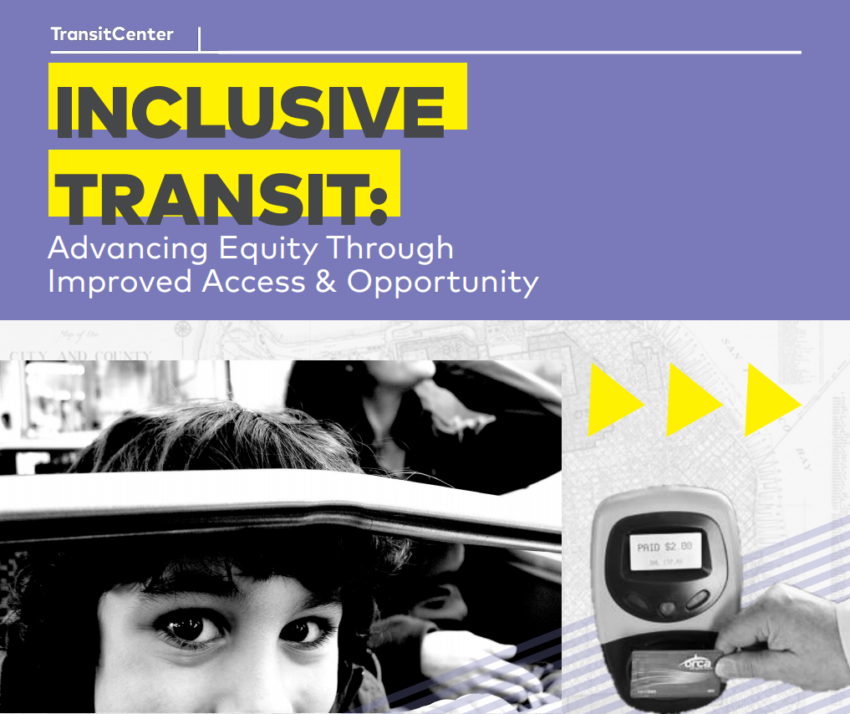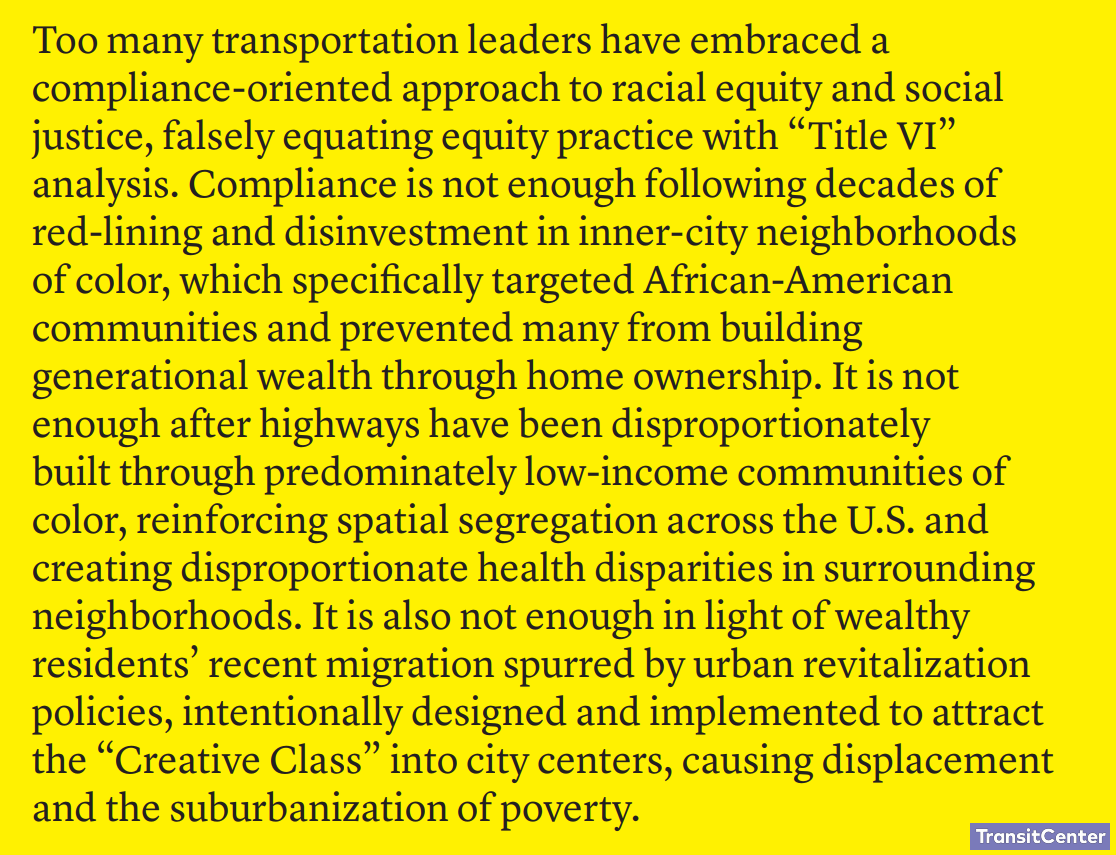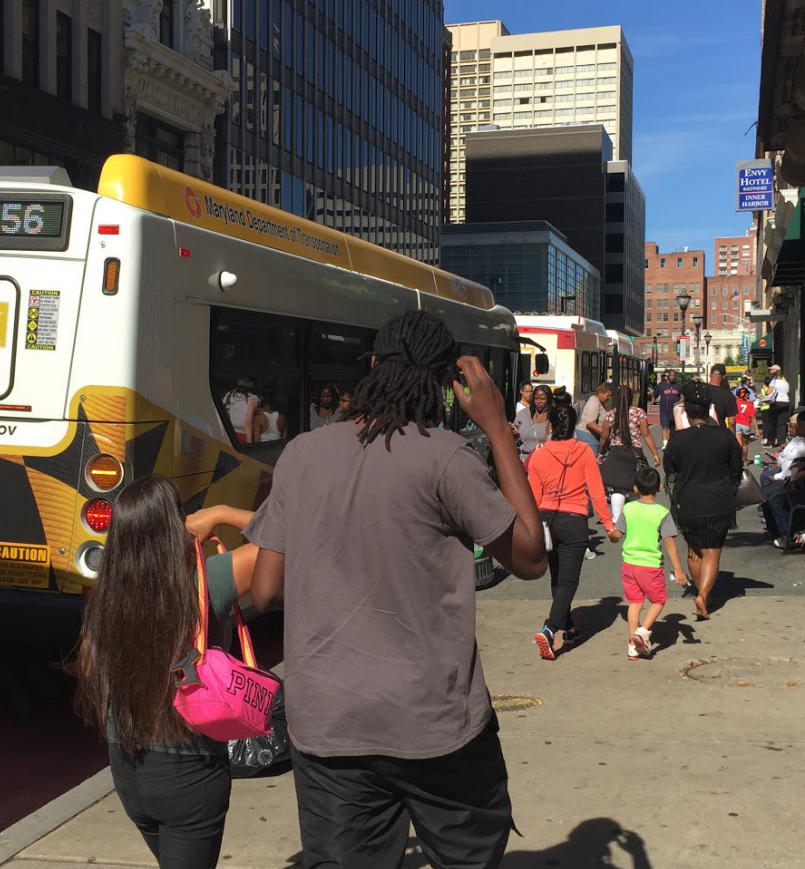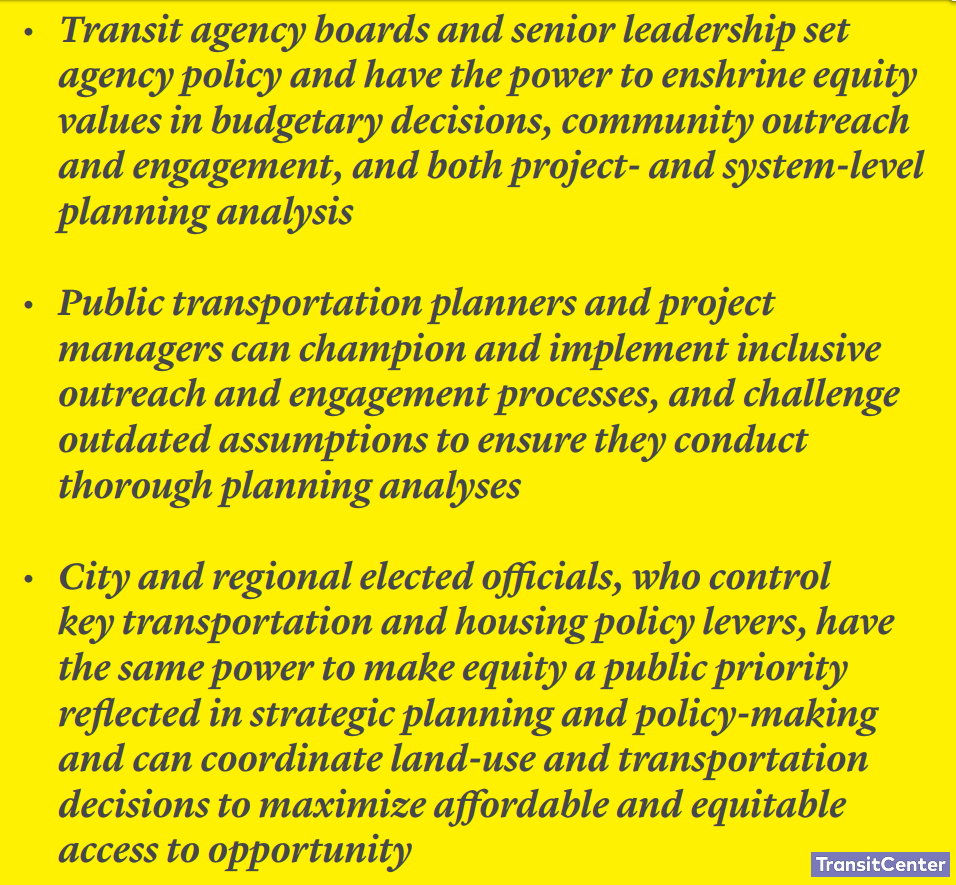
Share On Social!
A new report will help transportation planners and policymakers make public transit more equitable and inclusive in their cities, while minimizing public health and climate change impacts.
Safe, affordable and reliable public transportation benefits entire populations and can improve a person’s health and social mobility.
But too much money pays for projects that widen historical gaps in access to transit options for Latinos, other communities of color, and low-income people.
To highlight and reverse this trend, the TransitCenter foundation released a report, Inclusive Transit: Advancing Equity Through Improved Access & Opportunity.
The report shows how to empower transit agencies to advance equity.
“This can lead to prioritizing transportation investments that better enable people to meet their day-to-day needs—getting to work, school, the grocery store, the doctor’s office, and social and leisure activities,” according to the report by the TransitCenter, which works to improve public transit to make cities more just, environmentally sustainable, and economically vibrant. “Allowing people to meet these needs creates long-term economic opportunities and helps people escape poverty.”
What Not To Do in Public Transit
State and federal tax dollars often pay for projects that widen gaps in access to transportation options for low-income people and people of color.
Transit projects too often focus on economic development and property values.
Moreover, when it comes to equity policy, transit agencies are often only tasked with limiting further harm to people of color─rather than advancing equity.
“The same policies and planning practices that led to structural inequalities, overinvestment in highways, and sprawling land use patterns have rendered public transportation inaccessible to many who would benefit from it,” according to the TransitCenter report.
This type of inequitable planning exists across states and localities.
 The Wisconsin Department of Transportation, for example, allocates more than 75% of its budget to highway maintenance and expansion. Only 25% goes to transit.
The Wisconsin Department of Transportation, for example, allocates more than 75% of its budget to highway maintenance and expansion. Only 25% goes to transit.
Maryland canceled $2.9 billion for a state rail project that would improve transportation access for low-income communities in Baltimore, in order to fund highway capacity projects.
In New Orleans, a $75 million streetcar expansion decreased overall job access via transit for nearby residents. Meanwhile, a cost-neutral improvement in bus service increased access to 5,000 jobs.
In New York City, city service exceeding two million bus trips daily fights for budgetary table scraps while a suburban project serving 162,000 trips receives $10 billion.
“The failure to align public transportation service with the populations who rely most heavily on transit is not just a shortcoming of equity planning, but a shortcoming of basic transit planning,” the TransitCenter report states.
 Making Public Transit ‘Inclusive’
Making Public Transit ‘Inclusive’
The Inclusive Transit report provides opportunities and recommendations for planners and policymakers to apply in their local context to improve the lives of low-income and minority communities.
They also have five videos.
The report’s six recommendations below are built on inspiration from and research conducted by leading social justice advocates—national organizations like PolicyLink and its Transportation Equity Caucus, the Center for Social Inclusion (now Race Forward), the Transportation Equity Network, and the Government Alliance on Race and Equity—scholars, and local and community-based transit advocates across the U.S.
- Prioritize transit service for the people who need it most. Use spatial analysis to identify and target transit investment to high-need populations.
- Transit access practices such as fare policies should target high-need communities. Pursue progressive far policies to reduce financial burdens on low-income transit riders.
- Engage community members and civic organizations. Make public input more accessible by conducting outreach in impacted communities, and going beyond traditional public meetings.
- Plan for housing affordability. Actively pursue transit-oriented development, with strong affordability requirements.
- Support jobs in low-income communities and communities of color. Use transit operations and capital projects to create local community-based workforce development opportunities.
- Decriminalize fare evasion. Rely on transit staff instead of police to handle routine fare enforcement.
Examples of Public Transit Equity
The Inclusive Transit report also provides multiple examples of civic and social justice groups across the country that are advocating for improvements in bus service, walkability and affordable housing in underserved neighborhoods.
They also are pushing against police-based fare enforcement, where burdensome fines and potential immigration consequences await.
Minneapolis, Minn. (9.8% Latino). The Minneapolis City Council passed a capital spending resolution for street maintenance and safety improvements with a mandate to advance equity. As a result, 40% of projects funded through 2022 are located in areas of concentrated poverty, which account for 23% of city streets.
King County, Wash. (9.7% Latino). To improve affordable housing near transit, the Center for Transit Oriented Development (TOD) and the Puget Sound Regional Council (PSRC) generated neighborhood profiles accounting for population demographics, neighborhoods’ transit-orientation (density, existence of mixed-uses, walkability, quality of transit service), and potential demand for residential TOD (employment patterns, household incomes and sizes, and housing costs).
San Francisco, Calif. (15.3%). To prevent and mitigate displacement in the Bay Area, the Metropolitan Transportation Commission (MTC) commissioned researchers at UC Berkeley to develop the “Regional Early Warning System for Displacement.”
By establishing more inclusive planning practices local leaders can build (rebuild) trust with the communities they serve while cultivating improved access to essential opportunities like education, employment, food, healthcare, and historic and cultural sites.

Local leaders and transit decision-makers─ planners, senior leadership and board members─should reflect the communities they serve.
The Untokening, for example, a collective of mobility justice leaders of color, recommends agencies hire from outside the transportation industry, like public health, affordable housing, community organizing, and climate justice.
Improved bus service could meet the need for improved transit in many cities, but due to historic racial and cultural stigmas and lack of ribbon-cutting sexiness, buses are often treated as a second- or third- class transportation mode.
In addition to improvements to neglected local bus service, multiple government stakeholders are needed to incorporate equity goals and strategies into planning and policy decisions to implement data-driven monitoring and target transit-supportive investments like walkability and affordable, mixed-use development.
Strong advocacy is often necessary to build political support for bus service and transit-supportive improvements and shift focus away from shiny, high-cost investments that serve fewer people.
Find out who the transportation planners and policymakers are in your community and share this with them.
Join civic organizations with similar or overlapping interests, like public health, pedestrian safety, and climate action.
Explore More:
Transportation & MobilityBy The Numbers
27
percent
of Latinos rely on public transit (compared to 14% of whites).



